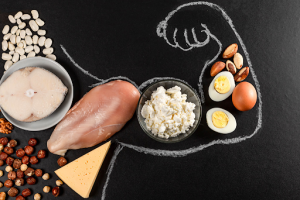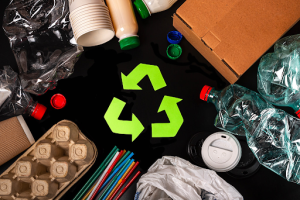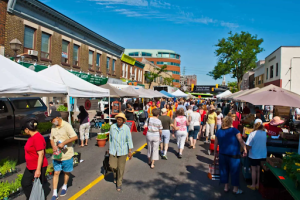Written By: Kiritika Rana
Edited By: Kiritika Rana & YFS
Designed By: Advita.G
Published By: Miriam Alonge Wato
Youth in Food Systems is a non-profit organization focused on the term “food systems”. Though, what are Food Systems? According to the International Food Policy Research Institute, “Food systems are the sum of actors and interactions along the food value chain—from input supply and production of crops, livestock, fish, and other agricultural commodities to transportation, processing, retailing, wholesaling, and preparation of foods to consumption and disposal. Food systems also include the enabling policy environments and cultural norms around food:”.

Factors of Food Systems
In a similar word of vocabulary, food systems are the actions involving the production, processing, transportation, and consumption of food. The steps for the production consist of knowing how to maintain crops and livestock, having sun, soil, water, and seeds, and having access to rich land. As a result, the food is ready to be processed, it can be used to feed animals, as well as humans. Some examples of this include milking, catching fish and seafood, and the collection of hen eggs, seed companies, plant nurseries, animal feed companies, and fertilizer producers. As a part of the input for processing the food is harvested, packaged, stored, and processed in facilities. This results in the food being sold and distributed to consumers and companies. An example of this includes a tomato being rinsed and then packaged. For the distribution of the food, it is sold and distributed. Later the food is ready for consumers, as they can purchase and cook the food. For instance, selling food at the local markets or grocery stores. The factor of consumption consists of getting food ready and the outcome is that food is ready to eat. Everyone around the world has taken part in this step because they have eaten the food. People can eat the food at home or a restaurant but either is part of the factor consumption.

In each of these steps labor, energy, and waste help the factors of food systems
Labor consists of the people who help work during the process like farmers, restaurant staff, cashiers, and many more. Energy is the electricity and/or fuel needed to help make food, and transport food like machines that help with farming, trucks, restaurants, grocery stores, kitchen appliances, and many more. Other components such as water, sun, soil, and seeds help make the food grow. Waste is packing used like plastic, boxes, and paper. This is positive or negative because some companies use recyclable materials while others don’t. Although some companies may use recyclables, consumers and shop owner waste food by throwing it into the garbage instead of donating it to a local food bank. Although, policies and climate change affect how the food systems in each country, province, state, or city, work. A policy like the trade agreements, and agricultural and food policies. This may impact some farmers, negatively as in a few places around the world as farmers must pay a fee for their food to be sold at markets. Climate change impacts if the food will even grow. For example, if there are too hot or cold climates vegetables and other types of food may not grow.
Types of Food Systems
Food systems are easier to define now, though did you know there are different types of food systems? The different types of food systems consist of global, national, regional, and local food systems. A global food system is a food that is being produced, processed, distributed, and consumed all around the world. For instance, Canada gets its dairy products, eggs, and honey from Australia during the winter months. National food systems are food that is being processed, distributed, and consumed on a national level. For example, Ontario gets most of its beef from Alberta. While regional and local food systems are food being produced, processed, distributed, and consumed on a regional and local level. An example of a local food system is getting food from a food market in your city.
Examples of Food Systems around the world

To see examples of food systems worldwide, people need to understand the examples of food systems worldwide throughout global food systems. Some examples of global food systems such as international trade, transportation of food, and fast food chains. International trade is an example of a global food system. International trade is when countries trade their products for imports from another country. The international trade of items usually consists of tech products, energy products such as oil or coal, manufactured goods, but also food. Another example of the global food system includes the transportation of food from country to country. This is an important example of global food systems because the driver delivers the food from trucks, airplanes, and/or trains making it so food is available for others. If countries lacked drivers to deliver the food people will be unable to eat the food that is available to them. People will be in chaos if there is no food available for them to eat. Fast food chains are predominant in North America, Europe, and Asia with many McDonald’s in over 155 countries having above 53,000 globally. Fast food chains may not seem like a global food system but they are. Over around 50 years, fast food chains have grown globally having many stores all around the world. The materials to make the food are shipped, packaged, processed, and transported all around the world. According to Bussiness Insider “Most of the beef that McDonald’s uses in its U.S. restaurants is raised domestically,” this shows that fast food chains are an example of global food systems.
Challenges of Food Systems

Did you know “About 9.2% of the world, or 689 million people, live in extreme poverty on less than $1.90 a day, according to the World Bank.” The human population around the world as of 2023 is 8 billion people with a huge percentage of humans living in poverty. There are many challenges that food systems face such as a growing population, competition for resources, climate change, and poverty. Population growth is a challenge for food systems because of the large demand in agriculture to produce enough meat and vegetables to feed the overpopulating population. The production of food will have to increase by 50% by 2050 to feed the growing population. Competition for resources is a challenge for food systems because the rapid population growth and high food consumption cause the fisheries to catch enough fish, and farmers do not have enough land to harvest their crops. If these patterns continue by 2050, 220% more water and 43% more farmland will be necessary to meet the dietary consumption of the population today. Climate change is another challenge for food systems because of the hot climate. The climate will cause the there to be floods, droughts, and unconditional weather for crops. Climate change will cause farmers to be unable to harvest crops because of the inconsiderable sun, and the small amount of water will cause the crops to go dormant. Poverty is another challenge for food systems because people are unable to get good healthy food. Poverty causes people to not get healthy food, education, and healthcare. So it is very difficult to implement the concept of food systems in those regions.
How can we help support food systems?

There are many ways others can help when it comes to food systems. Some of the ways include choosing local food, making dietary changes, and reducing food waste. Alongside choosing local food, people also make an environmental impact and a health benefit. People can go eat at restaurants that use local food from markets or farms, start a garden in their homes, and buy food from local farmers. Getting food from local businesses will boost the local economy and help out small businesses. This makes an environmental impact because most of what the farmers grow are fresh and never goes to waste. This is also a health benefit because most of the food at a market is fresh and has more nutritional value because it has gone with none or fewer chemicals. People can also make dietary changes to their food by eating less meat like beef and drinking less milk. This is better for the environment because cows release methane gas which is a cause of climate change. When a cow burps the greenhouse gases trap the sun more causing the climate to be warmer. So, by using fewer cow products people help to reduce greenhouse gases. If people do not know what to eat they should go plant-based or try to use more greens in their dishes. People will be more sustainable by going plant-based and helping support more local markets. Reducing food waste is another way to help food systems. More people waste food than eat it. Though to help people should only buy what they need as this will cause there to be less food waste. As consumers, if the food is not eaten, will go bad and not be good to eat. Overall, it is important to help food systems such as to be sustainable, have a healthy life by eating local and organic food, and support the jobs related to food systems fields.
______________________________________
Work Cited
Afsana, K., Fresco, L. O., Hassan, M., & Torero, M. (2021, September 15). Food System
Concepts and definitions for science and political action. Nature News. Retrieved March 4, 2023, from https://www.nature.com/articles/s43016-021-00361-2#:~:text=Food%20systems%20exist%20at%20different,very%20diverse%20and%20location%20specific
Burger, M. (2020, June 10). What makes up a food system? Breaking it down into 4 parts.
Sustainable Food Center. Retrieved March 4, 2023, from https://sustainablefoodcenter.org/latest/blog/what-makes-up-a-food-system-breaking-it-down-into-4-parts
Ettinger, J. (2022, August 5). 10 Ways to Help Make the Food System More Sustainable and
Inclusive. Ethos. Retrieved March 9, 2023, from https://the-ethos.co/sustainable-inclusive-food-system/
The Food System. FutureLearn. (n.d.). Retrieved March 4, 2023, from
Food Systems. Ifpri.org. (n.d.). Retrieved March 4, 2023, from
https://www.ifpri.org/topic/food-systems
Gillman, S., & Gillman, S. (2015, October 9). Can we make cow burps climate-friendly?
Horizon Magazine. Retrieved March 10, 2023, from
Government of Canada, C. F. I. A. (2022, August 17). Government of Canada. Canadian Food
Inspection Agency. Retrieved March 9, 2023, from
https://inspection.canada.ca/food-licences/trade/eng/1539883860127/1539883860720
Peer, A. (2022, December 20). Global poverty: Facts, faqs, and how to help. World Vision.
Retrieved March 4, 2023, from
https://www.worldvision.org/sponsorship-news-stories/global-poverty-facts
Peterson, H. (n.d.). Everything you ever wanted to know about how McDonald’s food is made.
Business Insider. Retrieved March 9, 2023, from https://www.businessinsider.com/how-mcdonalds-food-made-2015-5
Poverty, the right to food and Social Protection. OHCHR. (2023, February 17). Retrieved March
Quednau, R. (2018, June 21). 5 ways to access and support local food. Strong Towns.
Retrieved March 7, 2023, from https://www.strongtowns.org/journal/2017/2/6/5-ways-to-support-local-food
Reiff, N. (2023, March 6). 10 biggest restaurant companies. Investopedia. Retrieved March 9,
2023, from https://www.investopedia.com/articles/markets/012516/worlds-top-10-restaurant-companies-mcdsbux.asp
US EPA. Climate Impacts on Agriculture and Food Supply | Climate Change Impacts | US EPA.
(n.d.). Retrieved March 4, 2023, from https://climatechange.chicago.gov/climate-impacts/climate-impacts-agriculture-and-food-supply#:~:text=Reduced%20grain%20and%20forage%20quality,harm%20crops%20and%20reduce%20yields.
What challenges in the food system are we facing? FutureLearn. (n.d.). Retrieved March 4,
2023, from https://www.futurelearn.com/info/courses/revolutionising-the-food-chain/0/steps/170874
Images Cited (In order)
File:(1)McDonalds Cremorne-1.jpg. Wikimedia Commons. (n.d.). Retrieved March 11, 2023, from https://commons.wikimedia.org/wiki/File:%281%29McDonalds_Cremorne-1.jpg
Here’s what’s happening with the downtown Brampton Farmers’ market this year: Inbrampton. inSauga.com. (2018, February 12). Retrieved March 11, 2023, from https://www.insauga.com/heres-whats-happening-with-the-downtown-brampton-farmers-market-this-year/
Marco Verch Professional. (2021, April 5). Recycled arrows sign near materials for recycle and Reuse on black background, top view. Flickr. Retrieved March 11, 2023, from https://www.flickr.com/photos/30478819@N08/51095497416
Marco Verch Professional. (2021, January 30). Protein food and hand drawn with muscles- diet and fitness food concept. Flickr. Retrieved March 11, 2023, from https://www.flickr.com/photos/30478819@N08/50889476642
United Nations. (2012, March 27). Poverty in Viet Nam. Flickr. Retrieved March 11, 2023, from https://www.flickr.com/photos/un_photo/7021971361

